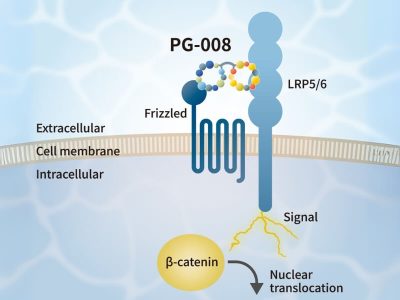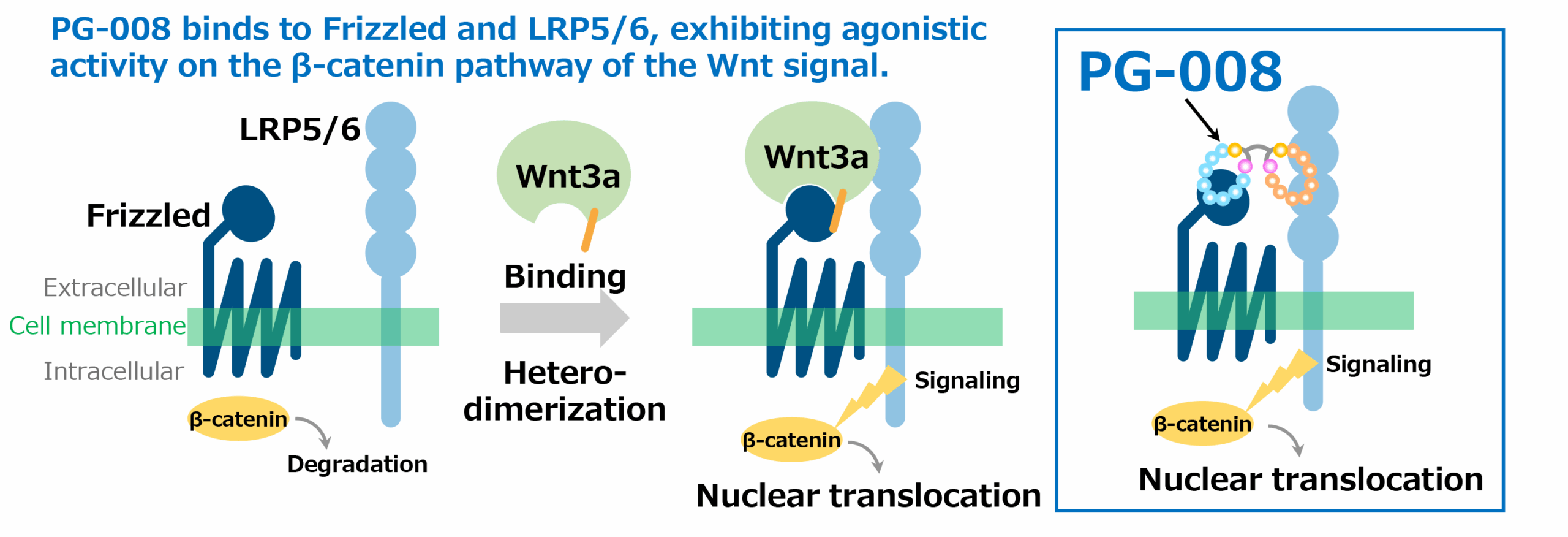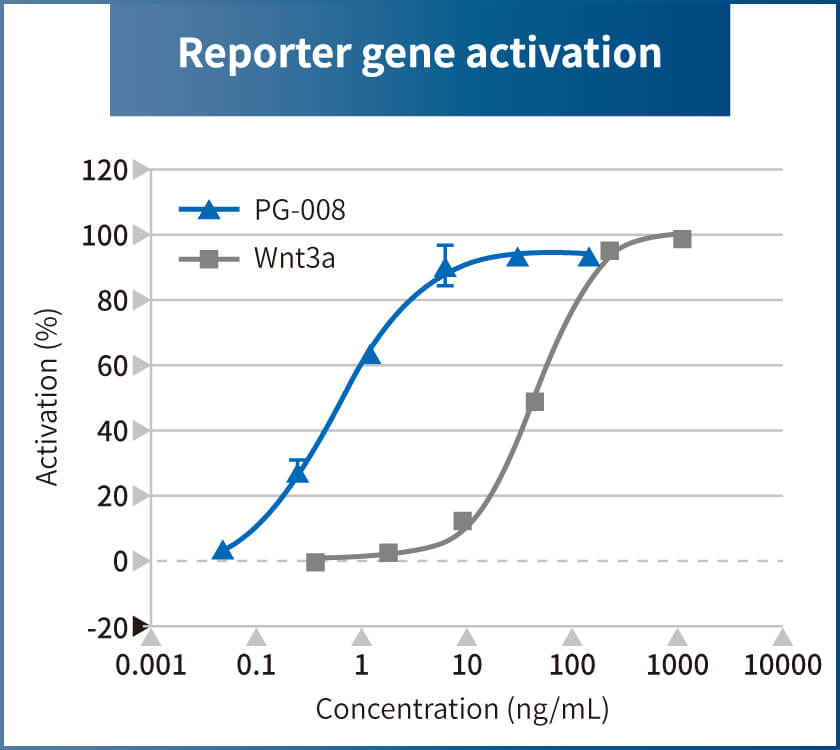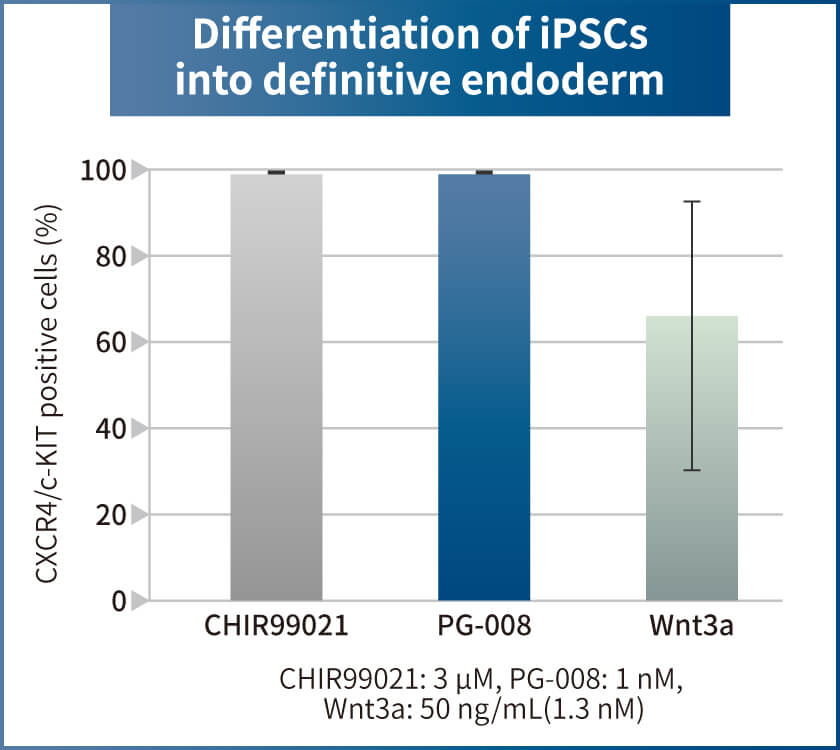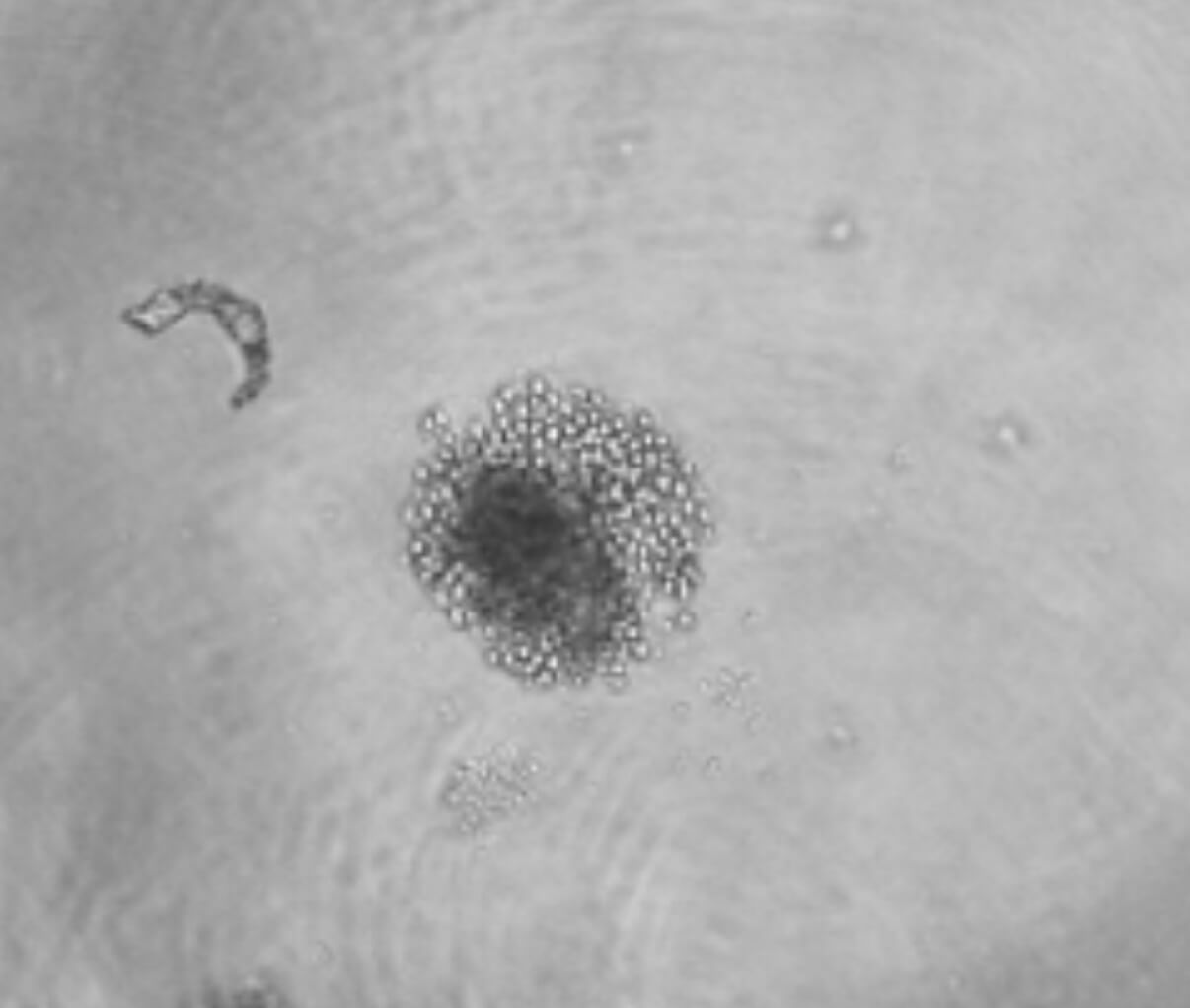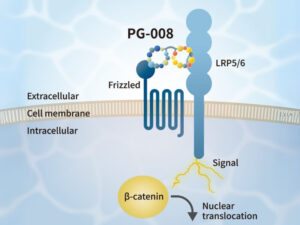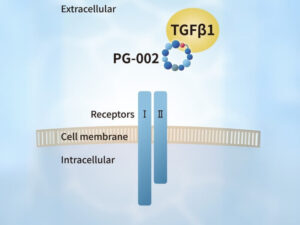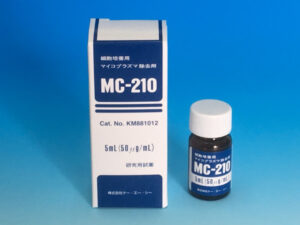PeptiGrowth PG-008
Wnt3a Alternative Peptide (β-catenin pathway agonist)
Product Basics
Wnt3a binds to Frizzled and LRP5/6 receptors to induce the β-catenin pathway of Wnt signaling. It is used in the differentiation of stem cells as well as the maintenance of organoids.
PG-008 exhibits agonistic activity in the β-catenin pathway of Wnt signaling, functioning in a manner similar to Wnt3a, and even surpassing the activity of recombinant Wnt3a. PG-008 serves as an alternative to Wnt3a or CHIR99021, with confirmed selective binding affinity for Frizzled and LRP5/6. Unlike Wnt3a, it does not have lipid moieties, and unlike CHIR99021, it displays no cytotoxicity. It exhibits comparable activity at 1/50 of the concentration of recombinant Wnt3a due to a difference in molecular weight.
Key Features
- Alternative to Wnt3a or CHIR99021
- Confirmed selective binding affinity for Frizzled and LRP5/6
- Comparable activity at 1/50 of the concentration of rWnt3a*
- Does not have lipid moieties (unlike Wnt3a)
- Displays no cytotoxicity (unlike CHIR99021)
- Stable. >80% remained after 14 days in serum free media at 37˚C
- Fully synthetic and animal-free
GMP grade can be manufactured upon request.
*Please note that this figure is an example and concentration optimization is needed.
Technical Information
(1) Superior agonist activity compared to recombinant Wnt3a
(2) Differentiation protocol of iPSCs into definitive endoderm (DE)
PeptiGrowth Inc. compared the differentiation efficiency in the induction of definitive endoderm (DE) from iPS cells using PG-008, recombinant Wnt3a, and CHIR99021, according to the following scheme.
1nM (≦1/3000 of CHIR99021) of PG-008 exhibited the same level of differentiation efficiency as 3μM of CHIR.
In the process of differentiating iPSCs into definitive endoderm, PeptiGrowth Inc. conducted a comparison of differentiation induction efficiency using CHIR99021, recombinant Wnt3a, and PG-008. The results revealed that when recombinant Wnt3a (50 ng/mL: approx. 1.3nM) was used, the efficiency was around 60%. However, when PG-008 and CHIR99021 were employed, they achieved an efficiency of over 98%. Remarkably, 1nM of PG-008 exhibited a differentiation induction efficiency equivalent to that achieved with CHIR99021 at 3uM.
(3) Differentiation of iPSCs into NKT cells through hematopoietic stem and progenitor cells (HSPCs), using PG peptides (PG-007, 008 and 010) or using VEGF, CHIR99021 (Wnt3a agonist), and TPO
PeptiGrowth Inc. demonstrated the differentiation of iPSCs into NKT cells through differentiation into hematopoietic stem and progenitor cells (HSPCs) using PG-007, PG-008, and PG-010, and compared the productivity of HSPCs and NKT cells and the functionality of NKT cells with the control condition using VEGF, CHIR99021 (Wnt3a agonist), and TPO.
Click here for more information.
Specification
- Storage temperature: -20°C (Ship at 4°C)
- Shelf life: 2 years (To be extended)
- Manufactured by: PeptiGrowth Inc.
Pricing
PeptiGrowth PG-008
- Wnt3a Alternative Peptide (β-catenin pathway agonist)
10ug
- SKU: PG-008-10ug
- Size: 10ug (eq. ~500ug of rWnt3a)
- Price: $380.00
100ug
- SKU: PG-008-100ug
- Size: 100ug (eq. ~5mg of rWnt3a)
- Price: $1,750.00
1mg
- SKU: PG-008-1mg
- Size: 1mg (eq. ~50mg of rWnt3a)
- Price: $12,000.00
References
- Logan, C. Y. & Nusse, R. The Wnt Signaling Pathway in Development and Disease. Annual Review of Cell and Developmental Biology vol. 20 781–810 (2004) doi: 10.1146/annurev.cellbio.20.010403.113126.
- Lu, J., Hou, R., Booth, C. J., Yang, S.-H. & Snyder, M. Defined culture conditions of human embryonic stem cells. Proceedings of the National Academy of Sciences 103, 5688–5693 (2006) doi: 10.1073/pnas.0601383103.
- Saito-Diaz, K. et al. The way Wnt works: Components and mechanism. Growth Factors 31, 1–31 (2013) doi: 10.3109/08977194.2012.752737.
- Dhamdhere, G. R. et al. Drugging a Stem Cell Compartment Using Wnt3a Protein as a Therapeutic. PLOS ONE 9, e83650 (2014) doi: 10.1371/journal.pone.0083650.
- A growing market for synthetically produced peptides. Nature (2022).
https://www.nature.com/articles/d42473-022-00352-2
FOR RESEARCH USE ONLY, NOT FOR USE IN DIAGNOSTIC PROCEDURES
